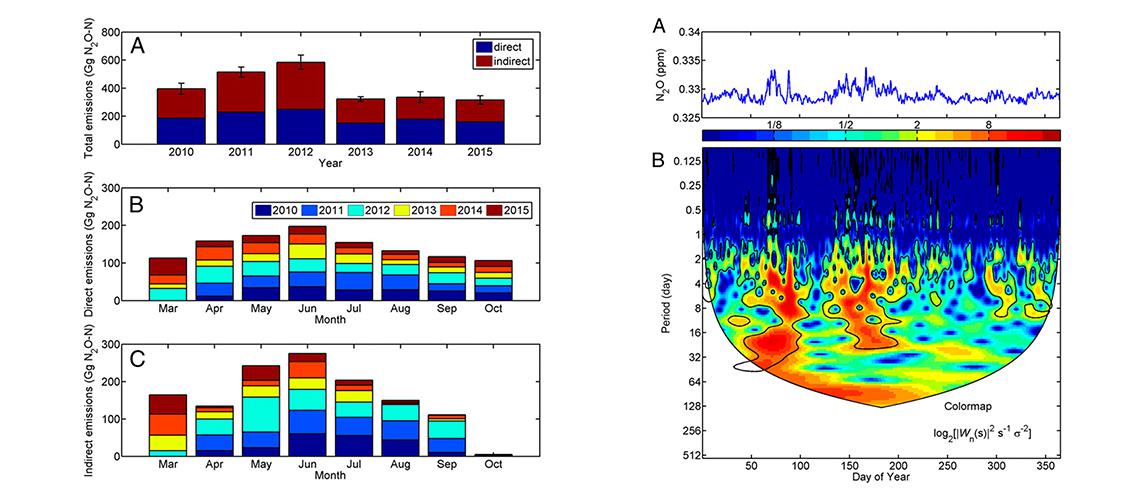
Nitrogen (N) fertilizers are widely used in agriculture worldwide, and their use is growing. One of the side effects of N fertilizers is that they release nitrous oxide (N2O). N2O is a greenhouse gas and major depleter of stratrospheric ozone, so knowledge about how it escapes into the atmosphere is important to climate researchers. However, how weather conditions affect the release of N2O into the atmosphere is poorly understood, and researchers aren’t able to make decisions about how best to mitigate the effects.
MSI Principal Investigators Tim Griffis and Dylan Millet (both professors in the Department of Soil, Water, and Climate) and their colleagues have published a paper studying the effects of temperature and precipitation on direct (from farmland) and indirect (off-site) N2O emissions. Using measurements from a tall (100 m) tower and computer modeling, the authors determined that warmer and wetter weather conditions result in higher N2O emissions.
Although the long-term N2O emission trends are derived primarily from the increased use of synthetic nitrogen, the large observed inter-annual variability of N2O emissions and the model-simulated trends indicate that positive feedbacks associated with climate change will be important. These temporal dynamics pose a major challenge to mitigation efforts and emissions accounting.
Reducing the use of N fertilizers could be difficult, since more fertilizer is needed as farmers try to meet increased requirements for food, fiber, and biofuel. Other methods of mitigation may be required.
The paper can be found on the website of the Proceedings of the National Academy of Sciences of the USA: TJ Griffis, Z Chen, JM Baker, JD Wood, DB Millet, X Le, RT Venterea, and PA Turner. 2017. Nitrous oxide emissions are enhanced in a warmer and wetter world. PNAS. DOI:10.1073/pnas.1704552114.
The Griffis research group uses MSI resources for studies of heat and mass transfer between the biosphere and atmosphere, which have important consequences for the climate system, ecosystems, natural resources, and human health. A previous paper co-authored by Professor Griffis was featured on the MSI website in 2015: Measuring Nitrous Oxide Emissions. The Millet MSI group is pursuing a range of projects that aim to improve understanding of the chemical composition of the atmosphere, how it is affected by humans and by natural processes, and the implications for health, air pollution, and climate change. A paper co-authored by Professor Millet was featured on the MSI website in 2014: Air Pollution and Socioeconomic Status.
Image description:
Left: Interannual variability of N2O emissions from the US Corn Belt based on Bayesian atmospheric inverse analyses. (A) Total emissions from 2010 to 2015. (B) Direct emissions. (C) Indirect emissions. The error bars in A represent the sensitivity of the total Bayesian inversion estimate to model assumptions related to background and tall tower concentration uncertainty, data quality control, and model transport processes.
Right: Seasonal emission patterns and dominant modes of temporal variability in the tall tower N2O mixing ratio observations extracted using wavelet techniques. (A) Ensemble (2010–2015) hourly average N2O mixing ratios observed at the tall tower 100-m level. (B) Wavelet analysis of N2O mixing ratios showing power in time-frequency space.
Image and description from TJ Griffis et al., PNAS. DOI:10.1073/pnas.1704552114.
posted on October 31, 2017